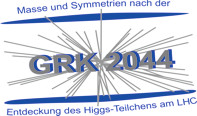Searching Particles with a Force Sensor
We have published the first results from the KWISP detector at CERN, which aims at measuring the tiny force induced by a beam of Chameleon particles from our Sun. According to some theories, these hypothetical particles could make up the dark energy responsible for the accelerated expansion of the the Universe. KWISP is a unique particle detector, mounted on the CAST axion telescope at CERN, which uses the deflection of a 100 nm thin Si3N4 membrane to measure a mechanical force. The tiny deflection can be detected optically as the membrane is also acting as a mirror in a Michelson interferometer. As the solar Chameleon flux is expected to be constant in time, it got split into bunches by a mechanical chopper in order to produce a time-variable signal which can be detected in the interferometer.
No force larger than 44 pico-Newton exerted on the membrane could be observed in a 10-day measurement campaign. This result was used to place stringent limits on the coupling of Chameleons to matter and photons.
- Original Article: S. Arguedas Cuendis et al. (CAST), First Results on the Search for Chameleons with the KWISP Detector at CAST, arXiv:1906.01084
- News Article/CERN: KWISP detector searches for dark energy from the Sun





